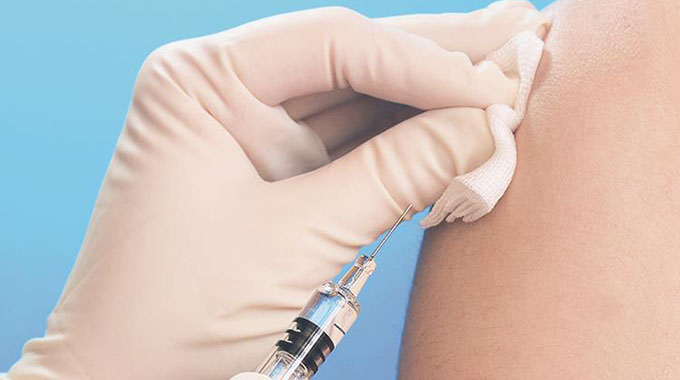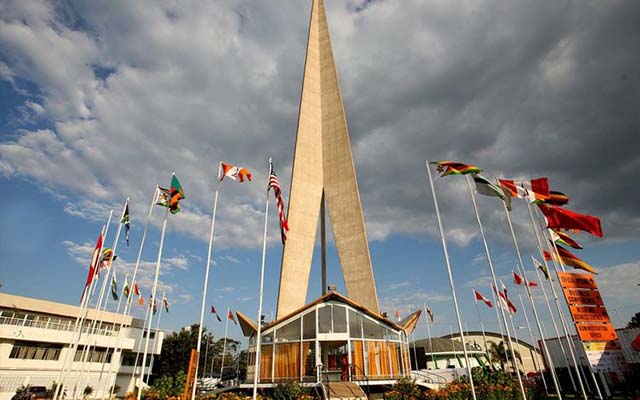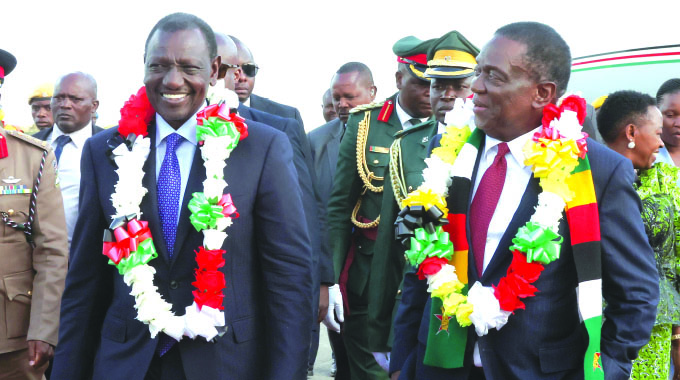Vaccination blitz: Zim reaches 10m dose mark

Herald Reporter
ZIMBABWE has now administered 10 million jabs of Covid-19 vaccines with more than half the targeted population aged 12 and over now having had their first dose, a pair of major milestones in the national programme
According to the latest figures from the Ministry of Health and Child Care, the total number of doses administered reached 10 009 053 on Thursday last week with almost 20 percent of those given since the start of the major blitz launched on March 21.
But more importantly by Saturday, 51,8 percent of the targeted population aged 12 and over, the age groups cleared for safe vaccination, had received their first dose, and so entered the vaccination programme, with the half-way mark reached just over two weeks ago on April 7.
By Saturday 5 822 347 people had entered the programme by accepting their first dose. Of those, 3 632 110 have now had their second dose, so about 32,31 percent of the targeted population are fully protected and are allowed a lot more freedom of association and movement.
And of those with the full vaccination, 578 222 have gone for their third and booster shot, about 5,14 percent of the total targeted group.
While there is still a very large gap between those who have had their first shot but not the second, almost 2,2 million, that gap is expected to close rapidly early next month as children go back to school and the second phase of the blitz sees the large number vaccinated at the end of March and beginning of April, line up routinely for the second shot.
However there is still a large group, of close to 1 million, who had their first dose well before the blitz but have yet to go back for a second shot. Medical authorities are urging them to take advantage of the teams out for the second phase of the blitz to get fully protected or just go to their nearest vaccination centre where teams are waiting.
Having had their first shot, they are obviously not in the group resisting vaccination and so just need to make the effort.
Fully vaccinated people with two shots are now able to travel in and out of Zimbabwe without having to get an expensive PCR negative test and are able to go to restaurants, bars and nightclubs and can play and watch sport. So there are a lot of advantages. They can also work in the civil service, where vaccination is compulsory.
From the start of the national vaccination programme on February 22 last year, it took just over three months, to May 29, to dispense the first million doses, as the supply chain was sorted out and the teams put in place.
The second million came up quicker, on July 22 and the third million very quickly on August 11, the fourth million on August 26 and the fifth million on September 19 as people moved swiftly into the queues as the second wave struck.
Then as Covid-19 infections continued retreating, a lot of people thought vaccination was less urgent and it took until November 6 to reach six million doses although the start of the Omicron wave, plus the vaccination of the examination forms in schools as children aged 16 and over were cleared, saw the 7 million mark attained on December 15.
Then things became really slow, even with zero queuing as vaccination teams waited, until 8 million was reached on March 16.
That was even after President Mnangagwa gave the go-ahead for booster shots, reckoning that those reluctant to take up free vaccination should not hold back those enthusiastic for full protection. You have to wait four weeks for the second shot and then at least another six months for the booster.
That was when the decision was made and the organisation put in place for the start of the blitz on May 21, with particular attention being paid to the recently cleared schoolchildren aged 12 and over.
Once again we saw some swift movement, with the 9 million mark on March 30 and the 10 million mark last Thursday, despite the slow down in people coming forward during the holidays, both school and national.
A lot of the problem is the vaccine resistance in some sections of the population, some declining on religious grounds, others because they trust weird people on social media who see conspiracy theories everywhere, with the more extreme right wing politics of the United States and Europe emitting a lot of the fake information.
For the record, no one has died from vaccination in Zimbabwe, and the worst
symptoms, in a small minority, is slight discomfort over one day.
Zimbabwe has shown it can handle more than 2 million doses a month with Treasury ready to buy what is needed, in both vaccine and syringes, to augment some very generous gifts, especially from China, and the Ministry of Health and Child Care ready to mobilise the staff and use the cold chains already functioning since the 1980s to distribute vaccines.
There are at the moment very good stocks of vaccine already properly stored in Zimbabwe. The distribution chains were already in place for decades for what is now the routine and standard childhood vaccination programme that sees almost all children immunised against a raft of childhood illnesses that once caused so much suffering.
No one has claimed vaccination against Covid-19 is perfect, but statistics built up around the world show that infection rates are sharply reduced, especially when backed by other measures that Zimbabwe continues enforcing, such as mask wearing in public, decent hygiene and some care in crowding.
Just as important, a vaccinated person who is unfortunate to be infected is far less likely to suffer severe or fatal symptoms. Almost everyone who needs intensive care or who dies has not had their shots.
This is why many countries that relaxed some safeguards have been seeing rises in infection rates.
Herd immunity helps, but needs to be backed by the individual protection of just about everyone.
Herd immunity works on the basis that an infected person will, on average, infect fewer than one other person, so a wave of infection dies out, but since a vaccinated person can be infected they also need the extra protection that sees far lower level symptoms to cut the risks.
Expert medical advice has always been for everyone to get their shots and take precautions and not rely on everyone else, or anyone else, being sensible.
While Zimbabwe’s infection rates are low at the moment, well under 50 new cases a day, we still see new cases and around a new death every day.
The enthusiasm for vaccination in Zimbabwe still shows strong provincial biases with the west and east of the country showing significantly higher enthusiasm than the six provinces in the middle, although rural Zimbabwe is catching up and starting to overtake Harare.
Matabeleland North leads in dose 1 coverage with 63,6 percent of the 12s and over now having had their first shot. But Manicaland on 63,1 percent is only just behind and Bulawayo on 61 percent is doing well.
Matabeleland South is in fourth place on 58,3 percent. The other six provinces are all below the average of 51,8 percent, although Masvingo on 51,1 percent, Midlands on 50,9 percent and now Mashonaland Central on 50 percent are over the half-way point and only just below average.
The rest of rural Mashonaland is doing a lot better, with Mashonaland East on 48 percent and Mashonaland West on 46,3 percent.
What drags down all the averages is Harare and Chitungwiza, easily the worst pair on the Health Ministry table. By Saturday Harare had just 44,4 percent of the targeted group with even a first dose and Chitungwiza with 41,7 percent.
Since a number of Chitungwiza people get their shots in Harare, you possibly need to combine the two for a provincial figure, and it is a pathetic 43,9 percent, despite the fact that no one has to go far in an urban area to get vaccinated for free.
When we come to the fully vaccinated, those with both shots, Bulawayo moves into a very easy lead with 47,3 percent while Matabeleland North, on 41,4 percent, is the only other province with more than 40 percent fully vaccinated. But once again Manicaland on 38,1 percent and Matabelaland South on 36,8 percent are the other two provinces above average.
With a lot of catching up having been done in the semi-rural or largely rural provinces during the blitz, there are a lot of people waiting for second shots next month.
Masvingo has 30,2 percent with both, and Midlands 28,3 percent. This means that more than a quarter of those now in the programme in those two provinces are just waiting for the required gap before going back for a second dose.
Rural Mashonaland sees Central on 30,8 percent with East on 29,4 percent and West on 27,2 percent. These three are likely to shoot above 40 percent next month as the blitz teams return for the second shots.
Then comes Harare. The city has 31,3 percent fully vaccinated and Chitungwiza has 24,7 percent, easily the worst on the list, but once again combining for a provincial total we have 30 percent, below all but two of the rural provinces who are catching up and will probably overtake the metropolitan province next month in the second phase of the blitz.
Harare and Chitungwiza have three major Government hospitals, a dense network of public clinics, two isolation hospitals with strong vaccination programmes, and probably more than half the private hospitals in the country. No one in the two centres is more than around 40 minutes by bus or foot from a vaccination centre, and most are a lot closer, and around half Zimbabwe’s private cars are in the province.
This sort of access is something many rural Zimbabweans dream about and yet they are now queuing while more than half of those in the large metropolitan province keep giving it a miss, despite the crowding that boosts risks sharply. And Harare contrasts very badly compared to the other metropolitan province with Bulawayo people far more eager. A fairly big jump in second shots last week in Bulawayo is perhaps related to the Zimbabwe International Trade Fair and a desire by city residents to take advantage of the opportunities with minimum risk.
In the booster shots, Matabeleland North is in a dramatic lead with 9,1 percent of the total targeted group now having had the third, probably because of the fanaticism of Victoria Falls where everyone wanted maximum protection to ensure the tourism industry they almost totally rely on to work exceptionally smoothly, with foreign visitors willing to come without worrying. The huge mining and Zesa communities in the Hwange area have also always been keen on protection.
Matabeleland South is second with 7,6 percent, with the two very busy border towns again pushing up the totals. Manicaland is third with 7,1 percent while Bulawayo is fourth with 6,4 percent. Even the five central rural provinces are doing reasonably well as those who already had their second shots more than six months ago took advantage of the blitz.
Harare people, even with the enthusiasts who did go for second shots some time ago, has just 3,8 percent and Chitungwiza, as usual bottom of the heap, with 2,8 percent. The combined provincial total is 3,65 percent and only Mashonaland Central on 3,5 percent is worse, but only just.
But that rural province is again catching up having hit the half-way mark on first doses so in seven or eight months must overtake the metropolis. This should be in progress now as tobacco is delivered and farmers take the opportunity while in the small towns to update their vaccination cards having had their first two shots last year.








Comments